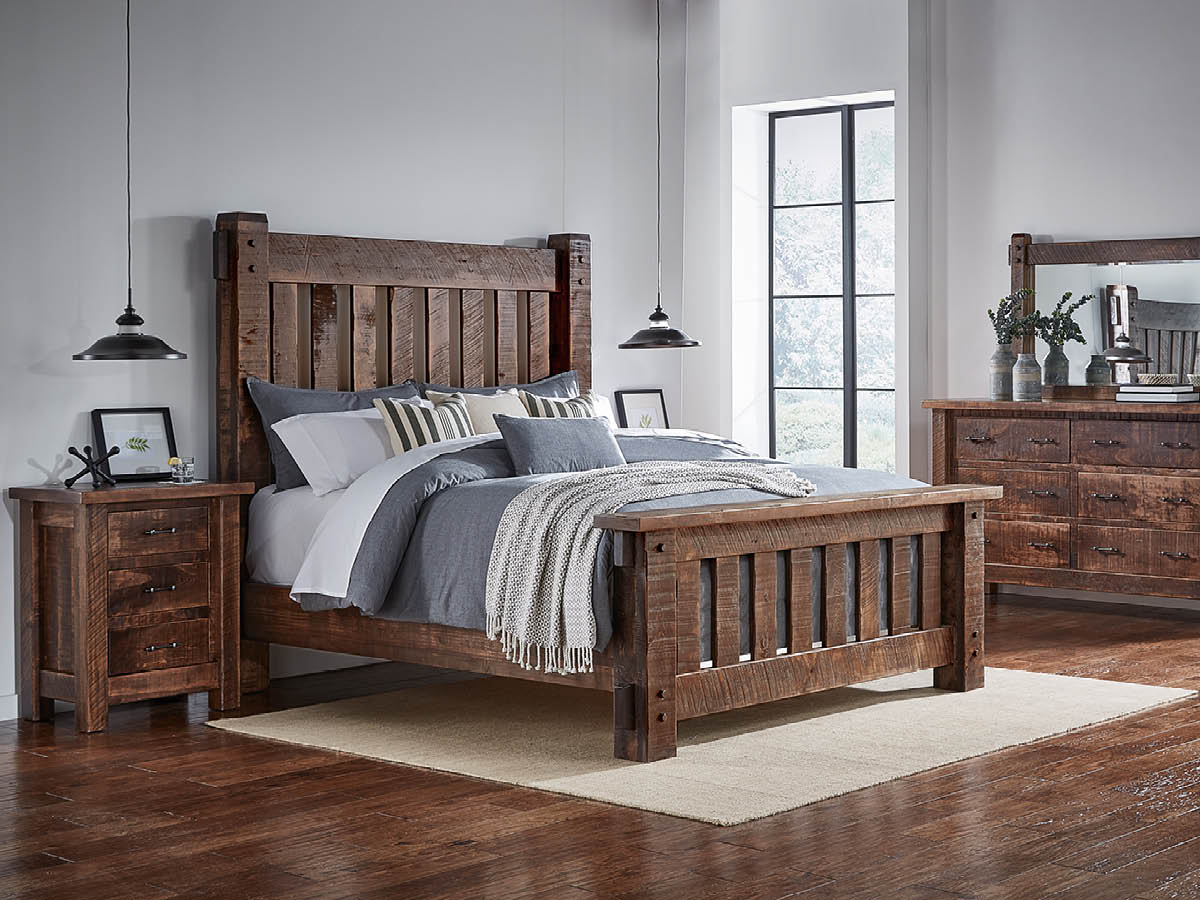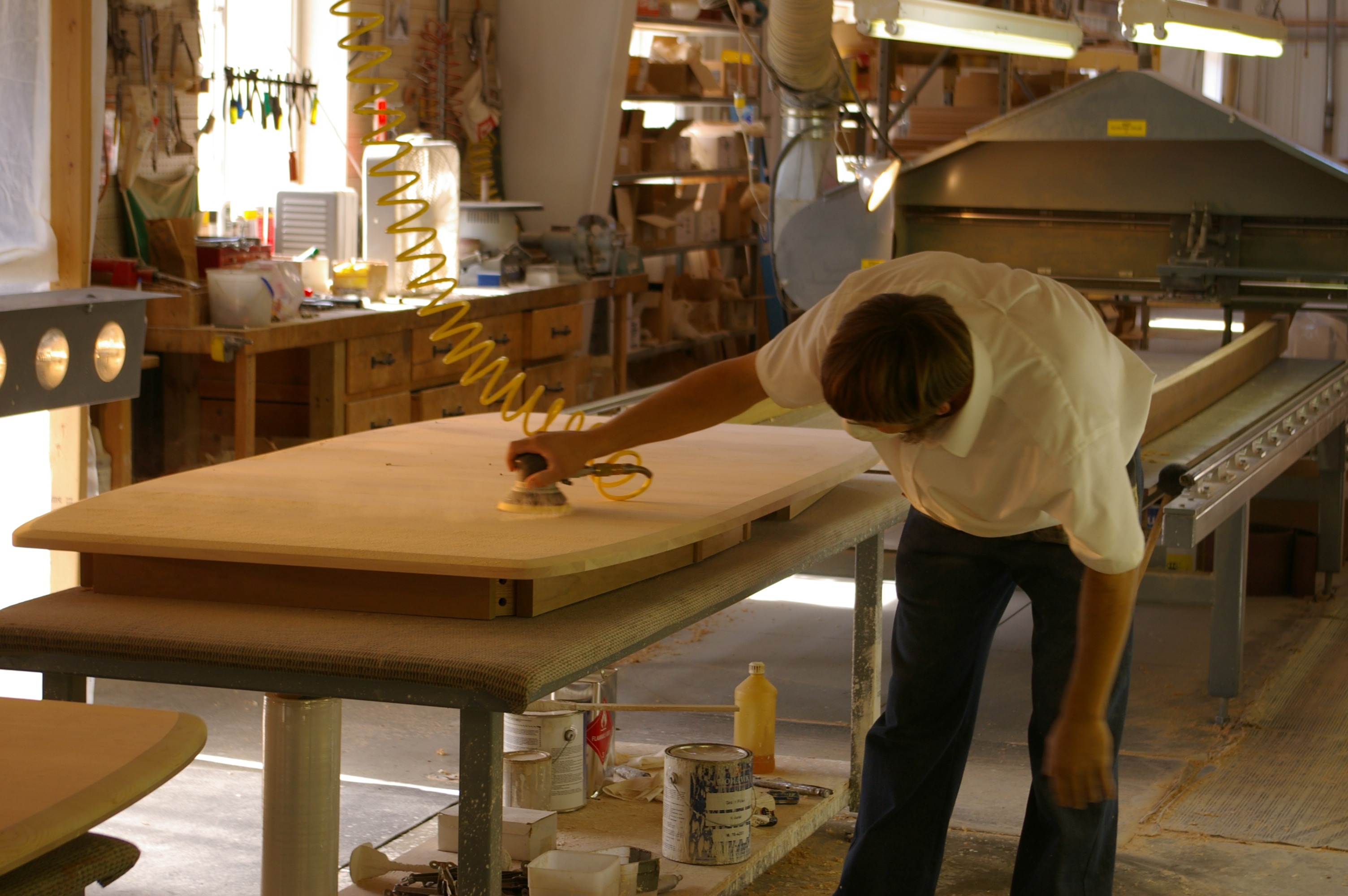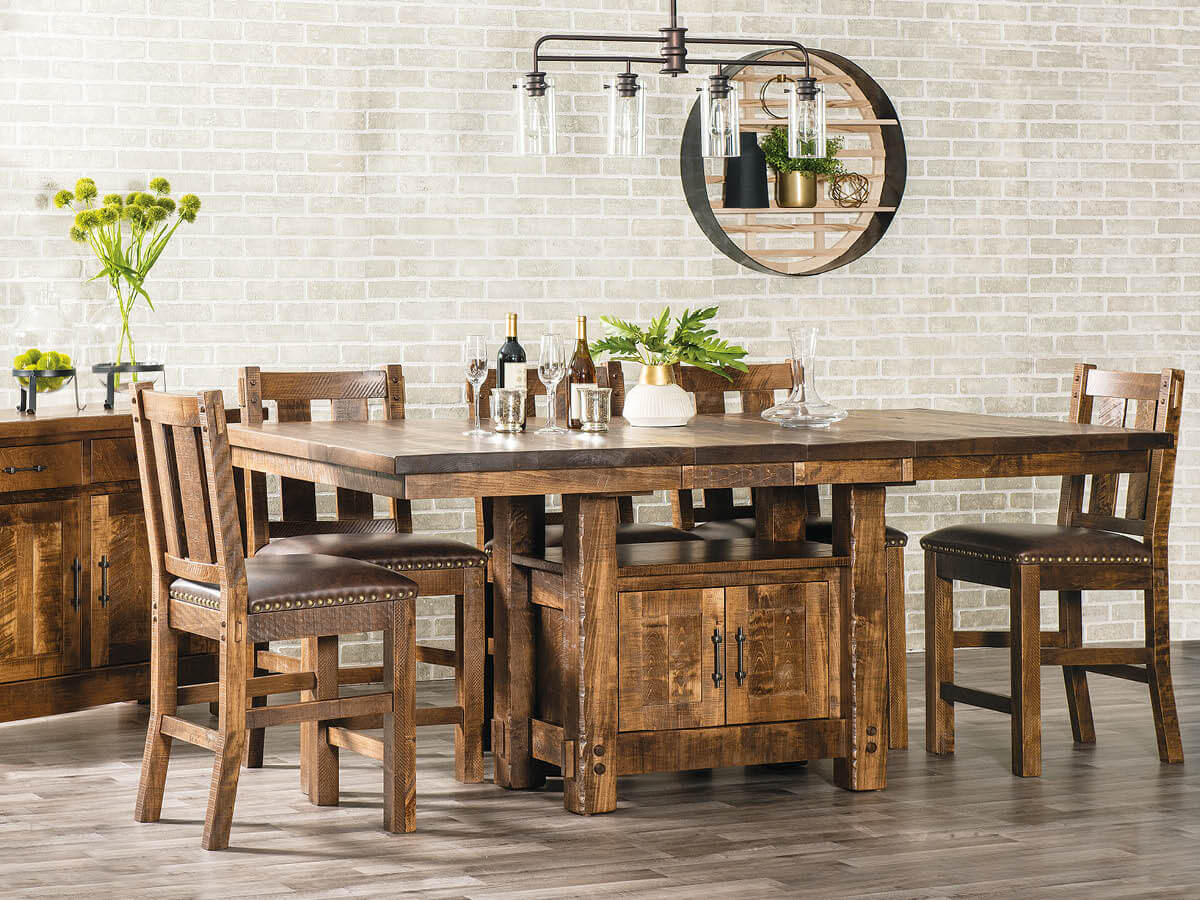Wood Veneer vs. Solid Wood Furniture
Learn About Key Differences Regarding Table Tops & Other Furniture
When shopping for wood furniture, you may notice two main types: wood veneer and solid wood. Countryside breaks down the pros and cons of each to help you decide the perfect pick for your space.
What is Veneer Wood Furniture?
Essentially, veneer is a thin layer of wood that is typically glued onto core panels. These slices are usually thinner than 3mm (or 1/8 of an inch) and can be cut as thin as 0.6mm (1/40 of an inch). For furniture construction, the veneer is attached to a carrier material such as MDF or particleboard. Veneer's purpose is to achieve the look of a higher-end solid wood for interior trim at a lower cost and shorter manufacturing time.
Veneer is made by cutting thin slices off a whole log to make a sheet of wood. There are several ways in which these sheets can be cut which results in different patterns of grain. The appearance of the grain in wood comes from slicing through the growth rings of a tree and can vary depending on the angle at which the wood is sliced. It’s not solid wood, but the veneer is a solid choice for some people, depending on their furniture needs and budget.
The construction method for veneer furniture is similar to laminate furniture. The main difference is the actual material used as the outer layer. Veneer features a thin layer of real wood, while laminate is usually made of synthetic material.
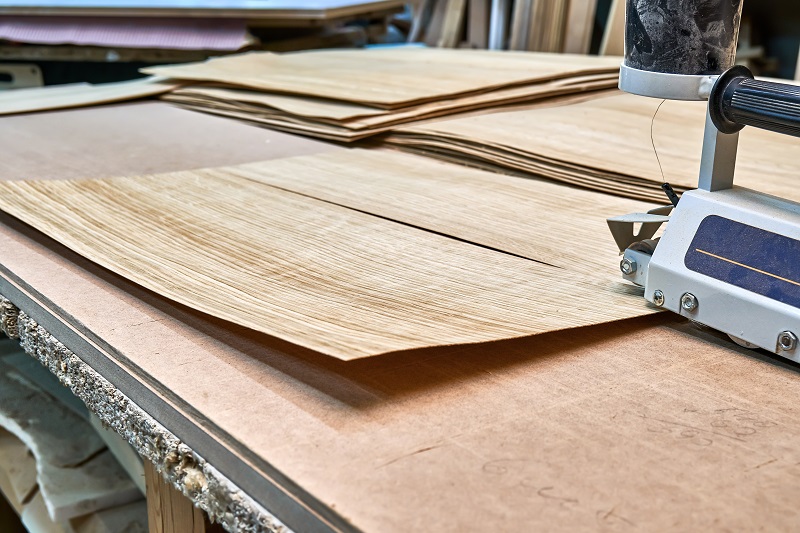
Pros of Veneer Furniture
Lightweight
Veneer is much lighter than solid wood. The core of veneer furniture is made of a variety of materials. Often MDF or particleboard, these materials are lighter than solid wood and rely on glue and chemicals for strength. While this construction makes them a lower quality, it does make the furniture lighter for moving or rearranging.
More affordable
One of the most beneficial aspects of wood veneers is their cost-effectiveness. If you happen to be on a tighter budget with your furniture rejuvenation efforts, this will be the choice that is most appropriate for your particular situation. Veneer offers a budgetary compromise if you aren’t comfortable with solid wood furniture prices, but want to spend a little more than laminate furniture runs.
Aesthetically flexible
There are many looks you can achieve with veneers, such as grain matching, sequence matching, and end-to-end matching. In comparison to laminates, natural veneers can be customized with polish or varnish to change their shade from light to dark more easily. Also, making a curved surface with veneer is easy, which comes in handy for intricate furniture pieces. Not to mention, because the thin layers require so much less real wood, you may have an easier time finding exotic wood pieces in veneer.
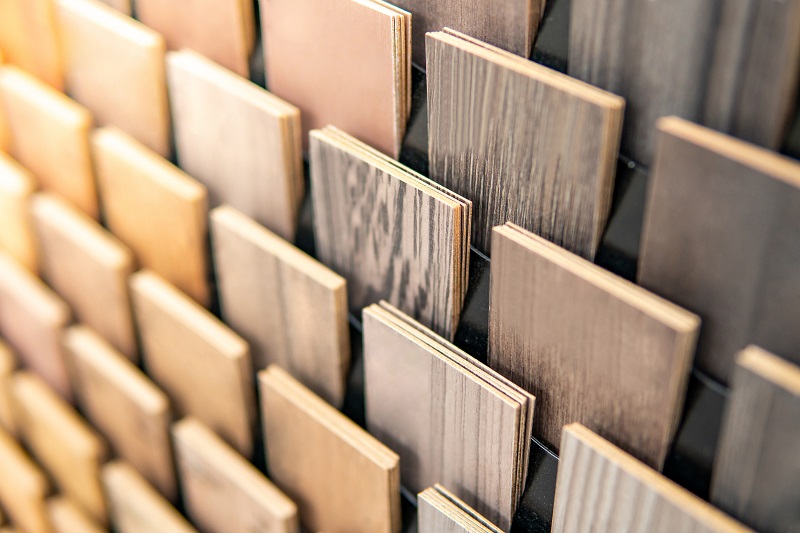
Cons of Veneer Furniture
Built for a short life
The majority of veneer in today’s market is of poor quality that chips easily or develops widespread hairline cracks. Wood veneer is often overlaid on MDF or plywood which has a different expansion and contraction rate than the wood veneer on top. The result is that when the wood veneer naturally expands or contracts according to the climate changes, the material below it does not expand or contract at the same rate.
More maintenance
Veneer furniture pieces demand daily care and cleaning for an appealing look. In most cases, when users ignore dusting, the furniture starts to get damp and accumulates wax on its surface. The best way to have wood veneer maintenance correctly done is to polish and apply wood furniture protective products regularly.
Easier to damage and harder to repair
Wood veneer can blister, delaminate or peel back at the edges if not treated with care. Since wood veneers are not coated with surface polish, it’s easier for liquids to be absorbed into the wood layer and cause damage. Unlike natural wood furniture which can be easily repaired by sanding several times, it is impossible to repair wood veneer. As it is very thin, once damaged cannot be repaired.
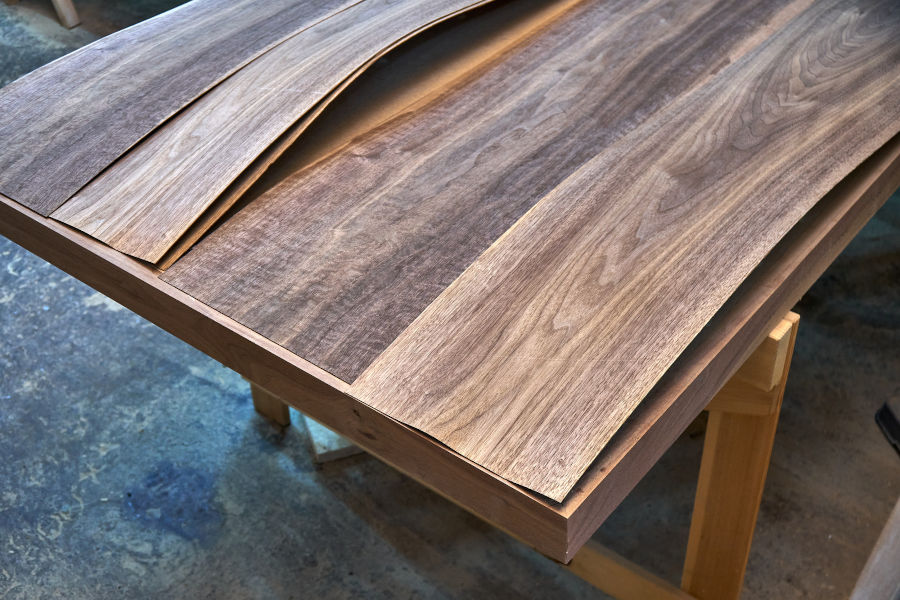
Debatable - Is it more environmentally friendly?
Veneer fans say that it's more friendly to the environment than solid wood due to its limited use of lumber. However, this is a limited view of veneer furniture’s life cycle. After all, what happens when someone has cheaply made furniture that is damaged from use, near-impossible to fix? They throw it out and buy another. Comparatively, the lasting quality of solid wood furniture makes it harder to damage, as well as easier to repair, sell, or repurpose. The solid wood piece can last a lifetime rather than be replaced every few years. Therefore, with more veneer furniture ending up in dumpsters and landfills, we can’t rightfully claim veneer furniture truly is more environmentally-friendly than solid wood.
Who Should Buy Veneer Furniture?
Veneer furniture is ideal for younger individuals not yet settled into a semi-permanent home or be able to afford solid wood furniture. Its lightweight nature makes it easier to move from place to place. If it ends up not accommodating the owner’s needs or shift in style preferences, the reduced upfront costs make it easier to switch out. It’s best for those looking for lighter pieces that are easier to move, as well as budget- and environmentally-conscious shoppers.
What is Solid Wood Furniture?
Solid wood is composed of 100% natural wood. Furniture made with solid wood can be sanded, stained, varnished, treated, and painted. This authentic composition adds a unique splash of refinement to your furniture.
The type of wood can range from softwood to hardwood varieties, each with its own distinct characteristics and appeal. The many varieties of solid wood allow you to choose a style that coordinates with your home or business.
Pros of Solid Wood Furniture
Strength and durability are unmatched
The low maintenance and longevity of solid wood place it near the top of the list for durability. Pieces made from solid wood offer a natural strength. Solid wood furniture is not a temporary furniture option. It’s durable and long-lasting furniture. Many people pass solid wood furniture down through generations because of its enduring quality.
One of a kind character
Solid wood furniture shows all the knots, textures,s and variations from the original wood — and those unique features go into the final product. Each piece is special, with slight variations, even if the furniture follows the same specifications. Solid wood construction means no two pieces are exactly alike, giving each solid wood piece a unique character.
Easy to maintain and repair
Solid wood furniture is very durable and, in many cases, easy to repair. This includes anything from scratches, watermarks, dents, and stains. And when blemishes do occur, they are often easy fixes; requiring only a quick sanding in your restoration efforts. For this reason, solid wood is more than worth it based on its impressive performance.
Personalization options
Solid wood furniture can be made from different species of wood — each of which comes with its own beautiful colors, patterns, and qualities. Solid wood is available in a variety of wood species with many different finish options. No matter what wood material and finish you choose, solid wood pieces offer versatile decorating potential to work with your existing furniture and décor pieces. Not to mention, hardwood furniture only gets better with age.
Cons of Solid Wood Furniture
Susceptible to extreme conditions
Because real wood furniture is, well, real wood, it can be prone to splitting. This generally only happens in extreme conditions, but real wood furniture can expand and contract to cause it to split along the grain. To prevent splitting, try to avoid exposing solid wood furniture to strong sunlight or direct heat sources.
Higher Cost
Quite simply, solid wood pieces and furniture will end up costing more than a veneer over MDF or particleboard., but when you buy solid wood, you’re making an investment in a quality piece. It’s also important to keep in mind that solid wood furniture pieces often retain their value or even increase in value over the years.
Who Should Buy Solid Wood Furniture ?
If you’re looking for long-lasting furniture, solid wood is the way to go. Its durability and all-natural aesthetic make it a great addition to any home. Buying solid wood is an investment, but buyers can rest assured their piece will retain its beauty for long after the initial purchase. Solid wood furniture’s character and natural look have a special way of adding warmth, elegance, and style to your home. It’s a great way to transform a room into a true living space. Because it has so much charm, character, and elegance, and because it conveys its high quality in its appearance, solid wood furniture is impressive and makes a statement. It says that you’re invested in your home and serious about making it distinct—and distinctly yours.
Not all wood is the same
Each wood type comes with a different set of characteristics in terms of color, density, grain, and finishing. Picking the right wood for furniture is critical as it helps you to determine the exact look and price of your unit. If you’re unfamiliar with hardwood types, we encourage you to read our how-to guide on selecting your wood type.
Hardwoods are usually acquired to build furniture because they stem from denser trees and have superior strength and durability. Whether choosing a classic like solid Oak or Cherry or bringing in a more modern appeal with Brown Maple, solid wood is sure to make a one-of-a-kind statement.
If you decide solid wood furniture is right for your home, we encourage you to browse our offerings at Countryside Amish Furniture. We offer Amish handcrafted furniture, with each piece being custom-made using quality, domestic hardwood, and reliable construction techniques. To begin browsing, view all of our solid wood furniture at this link.

